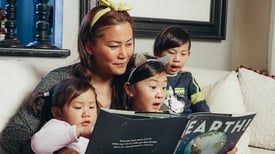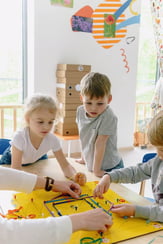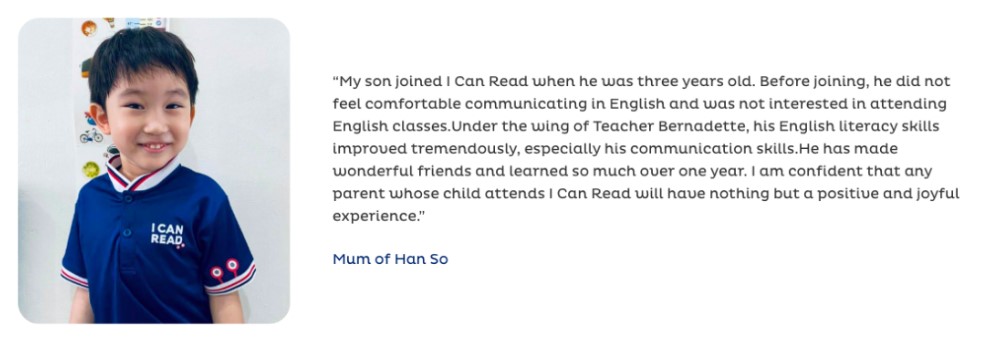
Why Effective Communication Is The Key To Just About Everything!
by I Can Read Singapore on 06 Oct 2022
“Communication is key” is a phrase that’s often tossed around group settings like school, home, or the workplace. Let’s unpack that saying and explore how effective communication skills set our children up for success.
Why are good communication skills so important?
Communication, at its heart, is a technique for expressing thoughts and concepts effectively. It is the art of hearing what is said and left unsaid - as well as the art of being heard and understood. Importantly, no one is born with the diverse skill set required to process all the verbal and nonverbal cues present in every social situation. Effective communication is a lifelong skill cultivated from a young age. In fact, the earlier children learn how to communicate, the better!

A child who is able to clearly express wants and needs, and thoughts and feelings, tends to perform well academically. Enhanced communication skills enable children to better absorb and transfer information - which positively impacts their learning process.
In addition, children who better express themselves, listen to, and empathise with others are more likely to build healthy relationships with their peers.
Children with effective communication skills typically enjoy better relationships in their personal lives. As children grow, they develop a range of communication skills that will become the foundation of their interpersonal skills and later on, their personalities. They learn critical skills such as sharing, persuasion, and assertion. Skills that help them overcome shyness, interact with peers from different backgrounds, and manage social behaviour.
Children who have grown up communicating with ease enjoy a largely seamless transition from their academic environment to the workplace.
At work, effective communicators bridge the gap between confusion and clarity. Strong communicators experience fewer instances of miscommunication, build stronger relationships with their colleagues, work productively, and collaborate well with teammates.

4 characteristics of an effective communicator
|
1. Empathy Effective communicators welcome differences in opinions. They actively listen and try to understand the emotions of others. Their rapport with those around them is indicative of their emotional intelligence. |
2. Brevity Less is more. Making their opinions known clearly and succinctly is the hallmark of someone with effective communication skills. To the person listening, brevity is also a sign of respect for their time. |
3. Confidence Children who understand the importance of communication make eye contact with their listeners, express their thoughts clearly, and rarely shy away from challenges. They are assertive and self-assured without being arrogant. |
4. Audience Analysis Persuasive communicators know their audience. They are able to tailor their communication to groups with varied motivations, challenges, and backgrounds. They quickly establish a sense of rapport with their target group. |
3 ways to practice effective communication at home
1. Ask your child to tell a story
 During their preschool years, children are learning how to interact with their peers and form social relationships. They can speak in sentences of around 5-6 words or more, and can understand most of what they hear. They enjoy practising their conversational skills as they observe new environments.
During their preschool years, children are learning how to interact with their peers and form social relationships. They can speak in sentences of around 5-6 words or more, and can understand most of what they hear. They enjoy practising their conversational skills as they observe new environments.
At this age, one way parents can encourage effective communication is to ask children about their day or get them to read aloud. This sends children the message that their opinions are important, which builds confidence in their communication abilities.
2. Talk them through
 When parents speak clearly and make simple requests, children learn to listen and follow instructions. Instructing children to complete a familiar concept or process can keep them from feeling overwhelmed, and help them understand verbal and non- verbal cues. For instance, a preschooler can be given two-step instructions like, “Please sit down and drink your juice”. Older children can be asked to repeat instructions given to ensure they understand. Children who practice learning and understanding at home are better able to cooperate with their peers and teachers at school.
When parents speak clearly and make simple requests, children learn to listen and follow instructions. Instructing children to complete a familiar concept or process can keep them from feeling overwhelmed, and help them understand verbal and non- verbal cues. For instance, a preschooler can be given two-step instructions like, “Please sit down and drink your juice”. Older children can be asked to repeat instructions given to ensure they understand. Children who practice learning and understanding at home are better able to cooperate with their peers and teachers at school.
3. Explain a difficult concept

Communication is a two-way process that involves articulation and comprehension. Talking children through difficult concepts can help improve their listening as well as their questioning skills. Early learners are given the opportunity to clarify information, reflect on what they’ve heard, and learn how to draw out information in future.

How we teach effective communication skills at ICR
At a Glance
1. Show and Tell
2. Short Speeches (Talk-Time)
3. Storytelling
4. Pronunciation practice
At I Can Read, children are exposed to a variety of settings and situations which require them to communicate effectively. These include Show and Tell and Talk-Time. We’ve set up a safe environment where even the shyest child is willing to open up and give communication a go. We do so by intentionally creating scenarios that encourage verbal exchange. Teachers facilitate this verbal exchange to encourage meaningful talk and provide guidance so that your child becomes an effective communicator. In addition, children get to try their hand at retelling a story or choosing an ending for a story, cultivating creativity.
